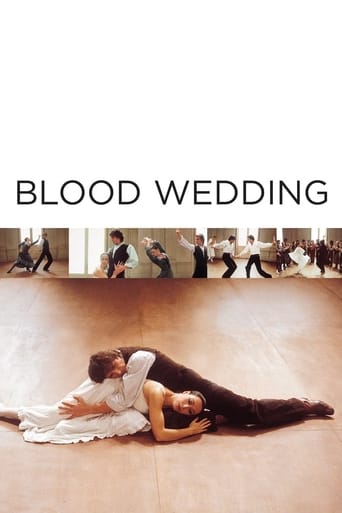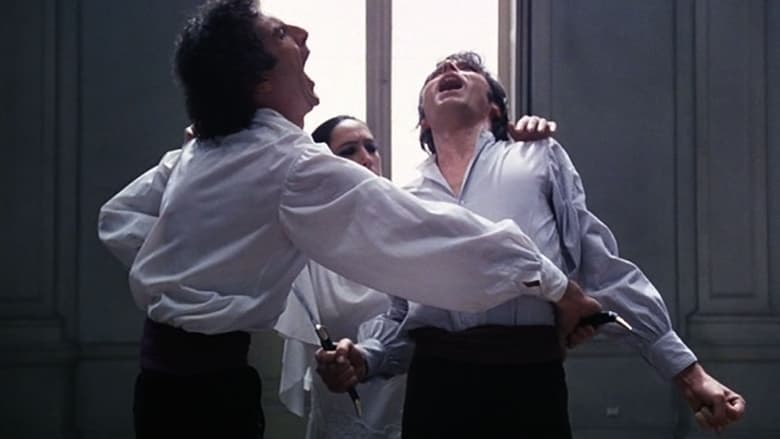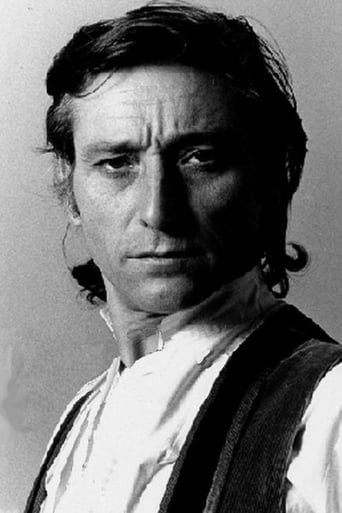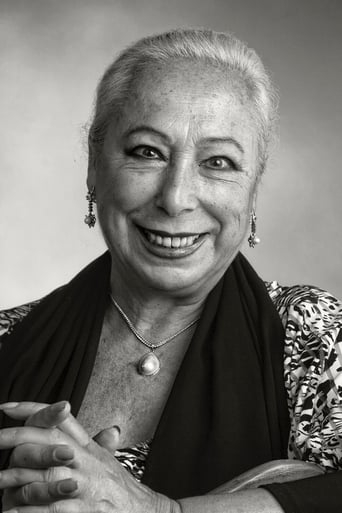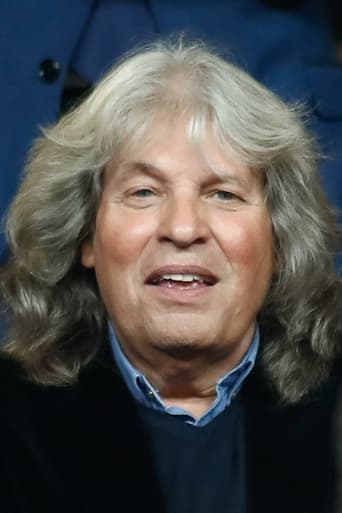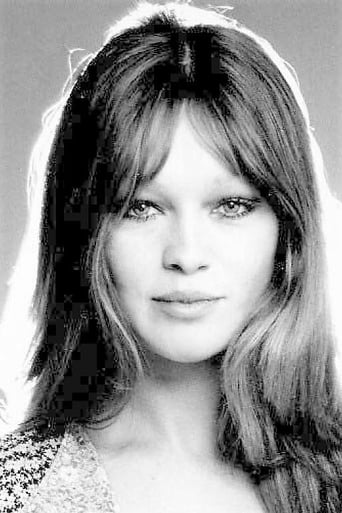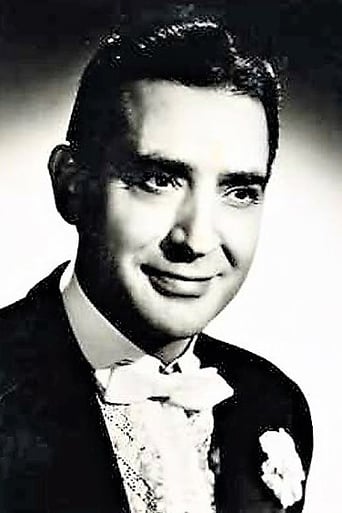A bride elopes with her lover on the very day of her wedding. The groom follows the two lovers, and a knife fight takes place. The rivals stab each other and the only wedding that takes place is that one knotting their destinies together in death. A blood wedding.


Reviews
I am drawn to dance films, first for the dance itself, I marvel at how the human body can turn itself into visual music. But also for what dance can signify in a cinematic sense: the embodying of sense in form, the visual flow of consciousness, but where the camera is one of the dancers and wordlessly conveys whole essences in the space of what we see.Here, I like the idea of centering the dance in the ordinary life that gives rise to it, so in the same flow we can pick up both improvised life and meticulous abstraction. We get the gathering of the troupe and preparations, the putting on of make-up and dressing-room small talk, the practice and rehearsal with its mistakes, and then a full dress rehearsal of the play instead of a big show.My gripe is that so much more could've been made on the weaving of realities. We have a 'real' first half, but we're not immersed long enough to form connections. The feel like we are eavesdropping could be carried in the actual danced narrative, which is about secrets and watching. The energy and choreographed spillovers in the camera could be more rigorous, the flamenco more passionate. Imagine a mistake in the flow like in the first rehearsal, but they dance through it: how do we accommodate damage, chance, spontaneity? As it is, there's too much theatric symmetry for me to like—not enough that is broken or alive. But at least the last scene is pretty amazing. It's a knife fight between men for the eyes of the woman danced in slow-motion—the mirrored poise and grappling of pride mistaken as love, the arrested flow playing to the desired spectacle of manhood both by us and in the play, the ballet of camera singling again and again the knife, the woman's muted mimicked and impotent horror of watching. It's a lovely scene that I'll keep with me, a sort of visual carving in emotional time.
The play on which this film is based is Federico García - Lorca's classic, poetic drama. The playwright/poet/actor/artist, who was probably Salvador Dalí's lover, was a brilliant sensualist who understood the power of myth and rural life. In this movie the story that is being performed on stage, the story that is taking place off stage, the whole weight of Spanish history and culture, the weight of flamenco as ballet and as folk art, and modern myths of romantic love are layered over and over each other. The movie is inexorable -- even when you realize the outcome, you are drawn hypnotized into it. Perhaps the greatest dance film ever made! You MUST see it.
As I watched the movie Bodas de sangre, I was completely disturbed. Although I like the Flamenco and appreciated how Carlos Saura, the director, incorporated it into the movie I wonder where some of the important themes went. The movie shows the emotions of the characters through the Flamenco however it fails to touch on some of the most significant ideas of the play. This movie lacks the themes that made the play so compelling. For instance, the importance of virginity, la honra, is totally forgotten. We don't see the mother's disappointment with her son's choice of a wife because the girlfriend had another boyfriend. Money and the desire for land are ignored as well as the significance of destiny. The viewer never understands the importance of destiny in regards to Leonardo and the groom. Also, the viewer cannot see that the characters in the book are nameless except for Leonardo. Maybe if I had not read the play before watching Bodas de sangre I wouldn't have been so disappointed. I thought that the Flamenco was a useful tool for showing emotion but couldn't carry the entire movie.
I had found Saura's last film, TANGO, trite and insulting, but I decided to give him another chance, in deference to his reputation. I needn't have bothered. Whatever his talent as a chronicler of character under oppression, he has no ability to film dance. He has no faith in dance's own expressive tropes, so he must impose meaning on them. He films in a flat, leaden style, which never allows the dance to come to life.Like TANGO, Saura foregrounds a self-reflexivity on the film. This time, however, it is used relatively intelligently. There is a pretence of documentary as we watch 'famed' choreographer Antonio Gades prepare for his flamenco adaptation of Lorca's Blood Wedding. We see the preparations of the dancers, the (tedious) warm ups, the donning of costumes.None of this is gratuitous (although the lingering on the undressing female dancers might be), and is infinitely preferable to the fictional ponderings of TANGO. The opening credits roll over a sepia photograph of the cast, mimicking the period in which the play was set. Lorca was, of course, a famous leftist, murdered by Fascists in the Civil War, and this is a film, made only a few years after Franco's death, that attempts to come to terms with Spanish history. The lengthy process of rehearsal emphasises the process of becoming, suggesting that history is not the monolithic entity the Right would like it to be, but a fluid interpretive searching, grasping, for the truth. The repeated gazing into mirrors links this national quest with an examination of the self. And yet Old Spain is not so quickly vanquished - one dancer hangs religious pictures on her mirror.So, the dance is made to carry a lot of baggage. We are not given the actual performance, but a dress rehearsal, continuing the idea of becoming, as if to offer a fixed definitive version would be to concede to the enemy. This austere restriction to one bare space, without sets, without any help from Saura, means that the dancing has to be spectacular for the film to succeed. It is not, being rather conservative, and blindingly obvious and literal, the dance equivalent of dialogue sung in a Lloyd-Webber musical. Every gesture is laboriously spelt out; the viewer is credited with no intelligence.It is totally inadequate to the play's politics, and the pared down approach means we lose its febrile, exhilirating excess. The critique of machismo and the death wish, applied to Spanish culture as a whole, is still there, but the climactic stand-off, while comparitively inventive, is more silly than cathartic, like Cavalliera Rusticana with the sound down. It is odd that a film so critical of the macho ethic should be so...macho.As with TANGO, any effect the film has lies in the music, which, especially in the mariachi wedding sequence, provides the drama and beauty absent from the filming itself.
